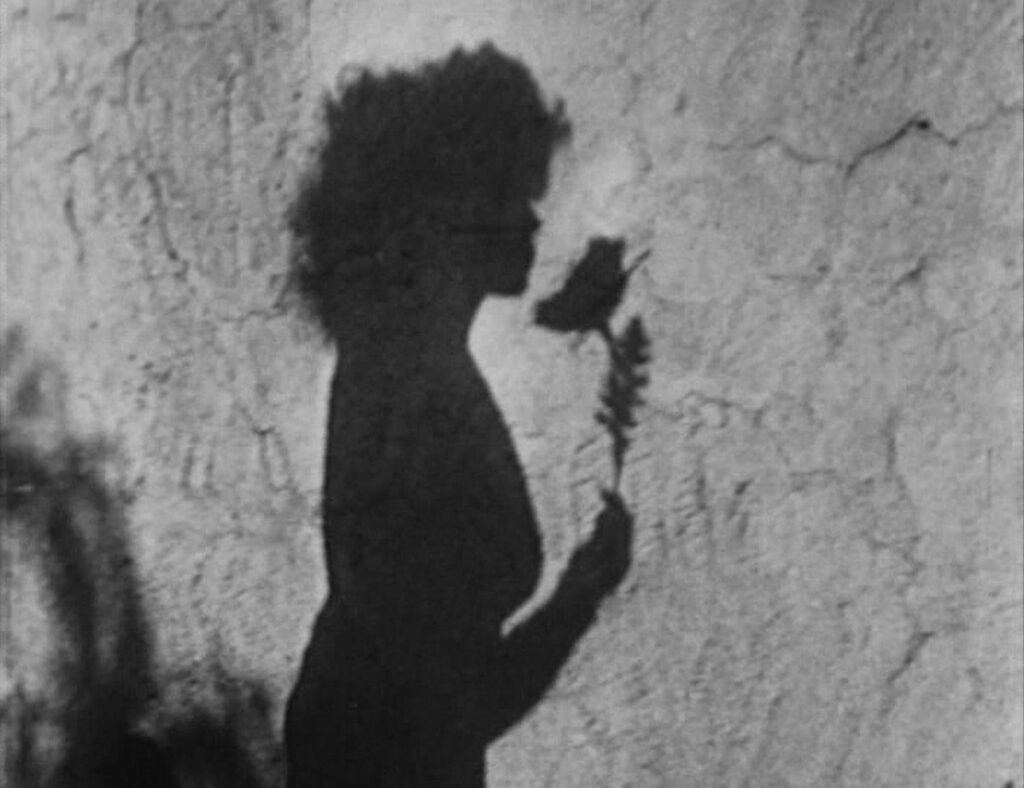
Meshes of the Afternoon
1943, directed by Maya Deren and Alexander Hammid
There are a couple of ironic things about Meshes of the Afternoon. First, whereas it seems to be full of repetitions that disrupt the flow of time and the integrity of reality, in fact most of the film is sequential and straightforward. Second, when a real repetition occurs, throwing the plotline back in time, most viewers probably miss it, placing it in chronological sequence.
Describing the plot makes the film easier to digest. A woman comes home to telltale signs that her partner or husband has left in a hurry. Newspapers litter the otherwise immaculate room. A knife falls from a loaf of bread as if put there hastily. The telephone is off the hook; a recently started phonograph is playing; and wind is blowing through the bedroom window. The woman had arrived uneasily… someone had left a flower in her path, and a figure cloaked in black had hurried away. She had knocked and tested the lock as if expecting someone to be there, and she dropped her key down the steps. Now, having confirmed that no one’s home, she comes back down for a nap in the armchair.
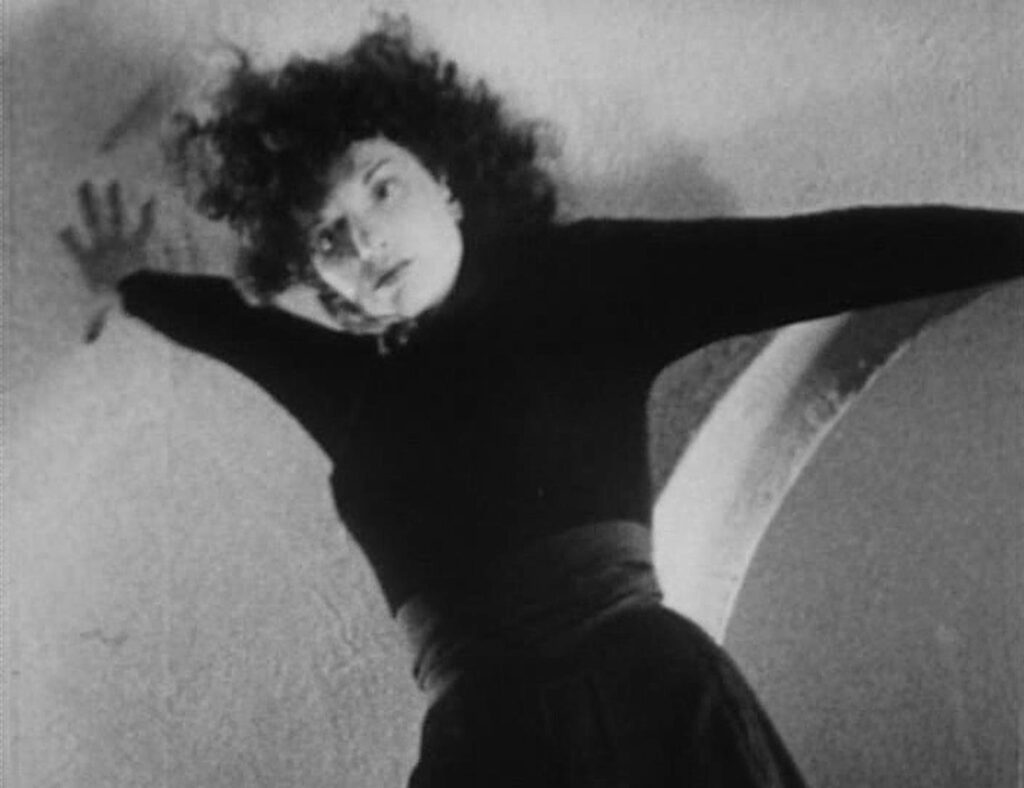
The next seven and a half minutes (more than half of the film) are flagrantly surreal, but that’s par for a dream sequence, which the film makes a clear effort to delineate. In short, the woman dreams about herself dreaming about herself dreaming about herself. A second, third, and fourth Maya (three dream selves – the woman is unnamed, but it’s simpler to call her by the actress/director’s name) come home like she did, accumulating until all four are together in the house. Each one is more unsettled than the last, magnifying her last waking emotions by stages. The second Maya floats up the stairs and sways in the window, wrapped in the gossamer curtain as if slipping deeper into a dream. The third Maya finds the house totally unstable, losing her balance on the swinging stairway. The cloaked figure turns its mirror face to her from the bedroom, and she comes downstairs in a choppy series of jump cuts.
Reaching deeper into her unconscious, the fourth Maya comes like some violent primordial id. Once all three dream selves are assembled around the table, they play a game. The fourth Maya draws the unlucky knife, and as she stands up to approach the first Maya, the scene cuts to a wild outdoor setting. Over seven seconds her sandaled feet step in close-up through a variety of surfaces – sand, dirt, grass, pavement, carpet – an abbreviated journey through the history of evolution, from the ocean where life began, to barren land, to plant life, to civilization (concrete), to the modern world (carpet). The sequence identifies the fourth Maya as the primitive kernel in the woman’s psyche, the “lizard brain” as it’s popularly called, coming out of Precambrian time to discharge its violent impulses. As we see, she directs her unconscious rage against herself.
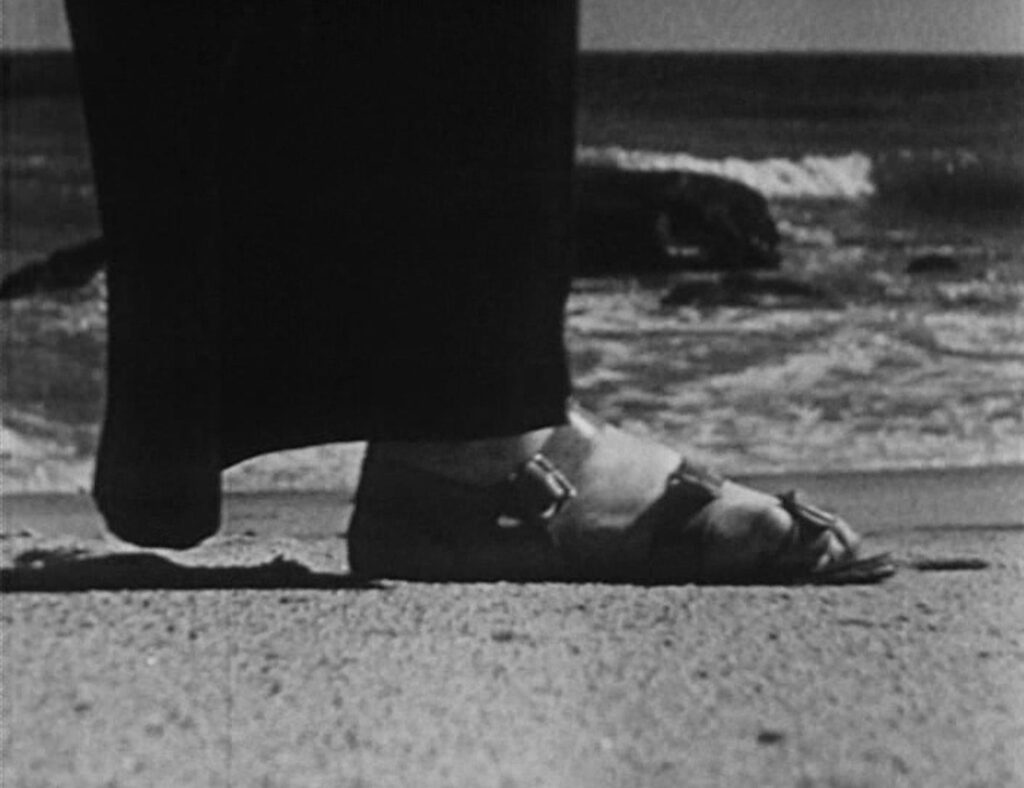
The woman wakes up to find her male partner in front of her, replacing her primeval doppelgänger. He leads his tired wife or lover upstairs to bed where she lashes out at him, striking his face with a knife – but instead of hurting him it shatters a mirror, exposing a hole in reality that opens onto the ocean. The fragments of the mirror land on a wet beach, and a wave washes over them.
The fact that she strikes a mirror rather than her husband confirms what the dream had told us, that her anger is self-destructive – after all, it’s her own face that she would see in the mirror. So far everything fits a straightforward narrative of a woman who has lost trust in her husband and turns her anger against herself. It’s not an unusual story at all. It’s wholly believable, and it might form the plot of a Hollywood drama (in fact it is made in Hollywood, which adds another irony). It shows the same kind of psychological insight that we expect from the best movies, and everything that seems so avant-garde about it is merely a function of either the dream or the film’s compression into such a short running time.
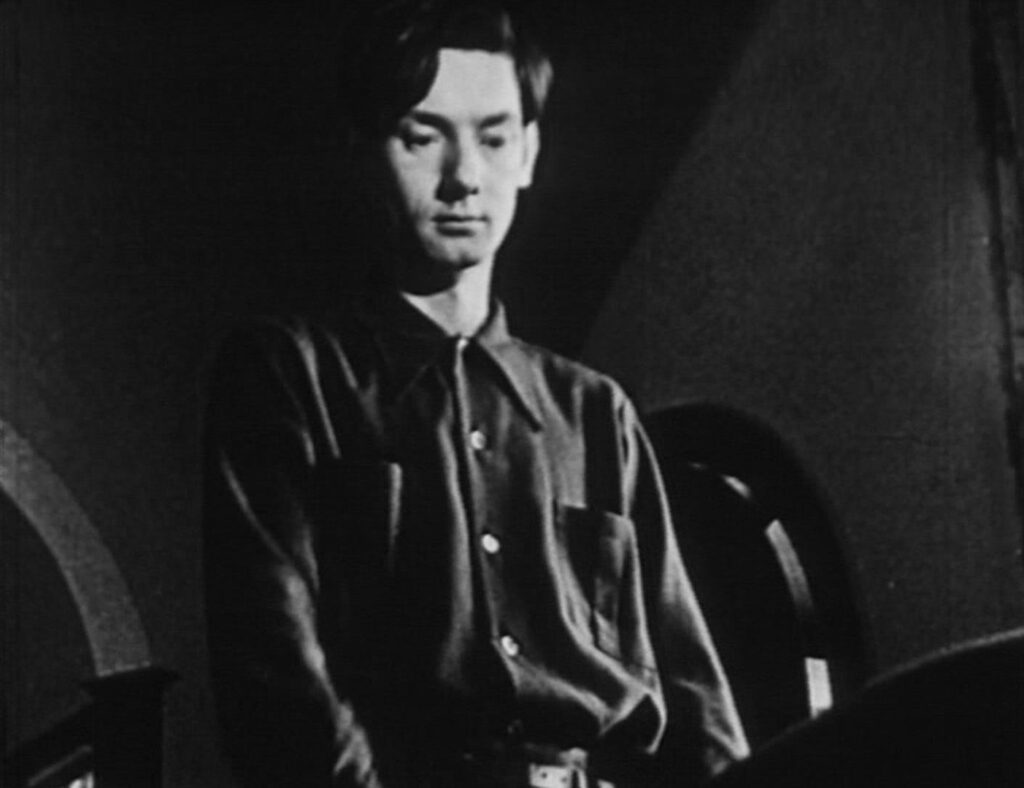
After the shards of mirror fall into the ocean, however, there’s a genuine disruption in time. The husband comes home like the wife had, letting himself in with a key, and he finds his wife dead in the armchair draped in seaweed. Of course the placement of this final scene is ambiguous, and we can choose to place it in sequence following everything else, but that leaves the ending disjointed and vague. We could also read the preceding passage from the husband’s first arrival to the shattered mirror as a continuation of Maya’s dream, but Meshes of the Afternoon works better if we view its last 45 seconds as an alternate version of that passage, seeing a different side of waking reality in both.
The last two passages – one where Maya goes upstairs and lashes out at her husband, the other where her husband finds her dead – form a genuine repetition, at least if we’re willing to look at it that way. Each tells the same story from a different point of view – how a woman who feels betrayed turns against herself. The first version is slightly more literal, or at least corresponds better to everyday reality. After processing her feelings in a dream and waking up with unreleased tension, she follows her husband upstairs and turns against him in a way that sabotages her own well being. It’s a common sort of occurrence, and in real life it can take many forms. She might blame her husband outwardly while blaming herself inwardly, or start a fight from a losing position, likely leading to another cycle of distrust and anger.
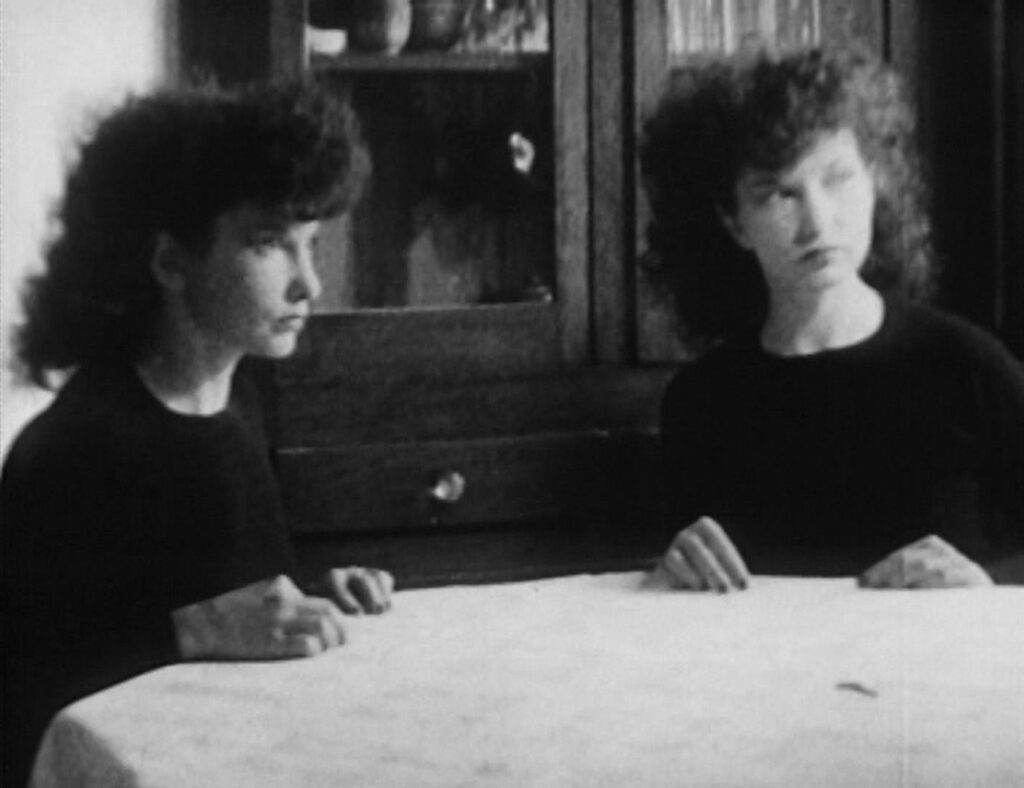
The second passage gives us, in its differences, a more rounded view of the situation. We see the woman already destroyed, presumably by the violent Fourth Maya who came out of the sea in her dream. Both passages end with her self-destruction, which is a foregone conclusion at the moment when she wakes up. The second version however confronts the husband with the results of their broken trust. He comes home to find his wife already ruined, and it’s up to him to react. How this might apply in real life is open… the relationship might be beyond salvation, or it could be his turn to come clean and salvage their trust. What’s important is the jolt of insight that the repetition aims for. In the first version of the ending, the couple reaches a point of conflict that’s likely to erode their trust further. The second version shows how the seeds of the conflict – the distrust and anger – have already hurt the woman, so that anything she does afterward is superfluous. The chance for the man to act, if there is a chance, is now.
Apart from the long dream sequence and the dual ending, a few other devices distinguish Meshes of the Afternoon from the verisimilitude of a typical narrative film. The opening image shows an unnaturally long arm laying a flower on the sidewalk, but a movie’s opening is generally fair game for any kind of artifice, because openings normally encapsulate the story ahead or point to the film’s meaning. The flower can be understood as the husband’s love, or the couple’s mutual love, which a deliberately impersonal arm leaves on the pavement at the moment the husband leaves the house. In fact the whole film strips the couple’s reality down to a few highly charged objects that stand for basic elements of life. A flower is associated with love, a knife with anger, a telephone with communication, bread with sustenance, and the remaining objects – a phonograph, a key, a stairway, a mirror, a bed – also have primal associations.
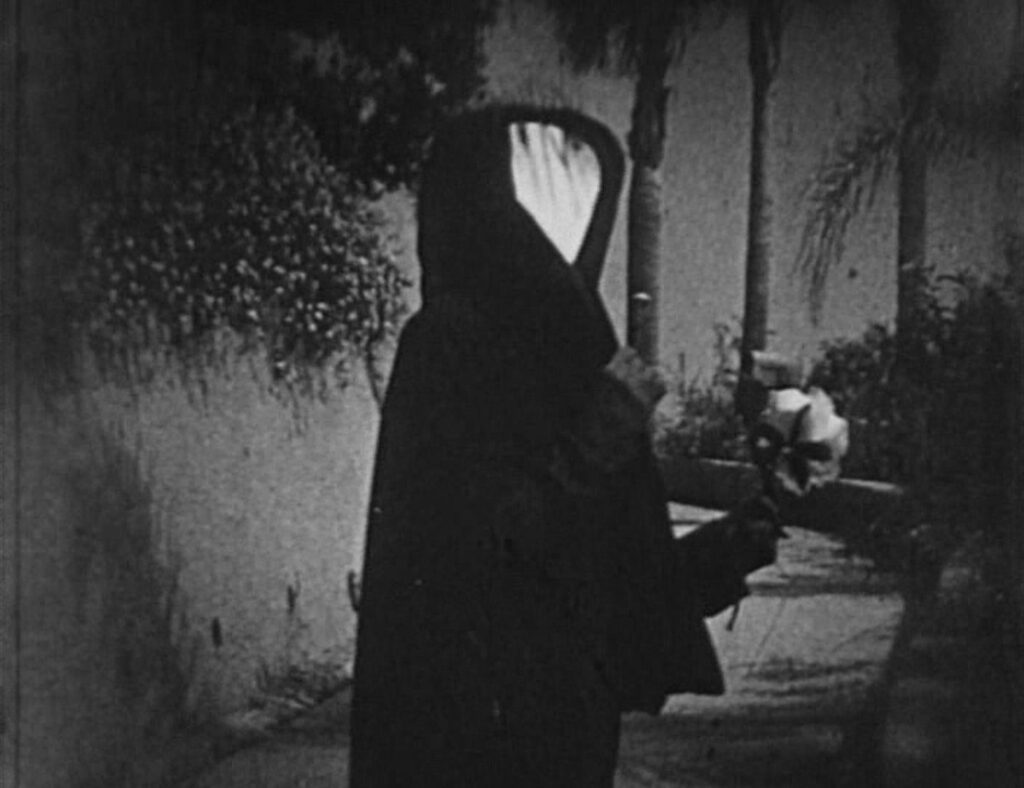
A longer film can build similar emotions and achieve similar insights without such flagrant artifice and without reducing the setting so plainly to its basic elements. Meshes of the Afternoon is impressive for its brevity, for the way it condenses so much into a few minutes with so few gestures and entirely without words. Nevertheless critics err when they place too much emphasis on its avant-garde qualities. What’s more interesting is how alike it is to so many Hollywood-style dramas about damaged relationships, suspicion, or self-destructive emotions. Treating the film as an exemplar of experimental filmmaking is usually unhelpful – like most genre-based criticism, it tends to devolve into catalogues of obvious observations or overly general comparisons to film movements. If we wish to see Meshes of the Afternoon for what it is, we must be willing to put it on a continuum with traditonal narrative film.
CONNECTIONS:
Gertrud – A woman, betrayed or disappointed by her lover, lashes out against an image of herself (a mirror or a portrait)
2001: A Space Odyssey – Multiple iterations of the same person in one room; abbreviated journey across evolution
Mulholland Drive – Long dream sequence revealing origins of self-destructive thoughts; symbolic role of a key
Enemy – Experience of infidelity from female/male perspective; multiple iterations of a person